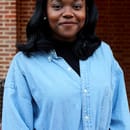It is no secret that African-American families are known to make less than their Caucasian counterpart. While watching the Netflix docu-series, “Explained”, one episode that particularly stood out to me was the episode discussing the racial wealth gap. The issue of the racial wealth gap goes to show that there is still a long way to go for us to achieve equality. Some of the startling facts presented in the episode included that the average white family’s income is $171,000. These earnings include their savings plus their assets. However, for the median black household, it is only $17,600. Unfortunately, this gap is continuously growing. The question that this “Explained” episode tried to answer was why?
One reason is that the United States, sadly, but not shockingly, has always tried to stop the progress of the Black family. After the end of the Civil War, African-Americans were asked what did they need to aid in rebuilding their lives in freedom. What came to be the consensus was that African-Americans needed land. As a result of the meeting to figure out what would be the best way to help blacks rebuild, Special Field Order No. 15 was issued. This order allowed each black family to have no more than 40 acres of land. However, due to President Lincoln’s untimely assassination, that is not what happened. Now you may wonder, what’s the big deal about blacks being unable to get their land? Or even think that was so long ago? It is a big deal because if our ancestors were able to obtain this land, we would have owned it ourselves. We have to remember: Wealth is something that grows overtime. For example, in the area of real estate, black families were not able to flourish due to the fact that real estate agents believed that if a black family moved into the neighborhood that automatically decreased the worth of the neighborhood. According to the United States census population survey, the homeownership rates by households in 1970s averaged 62.9%. As for black homeownership, it was only 41.6%.
Another factor that played a role in the racial wealth gap was the rate at which students graduated college. Now, what you would think is that going to college leads to higher education and that leads to making more money. You are absolutely right…for white students. As for young black men and women they made less. When researchers looked further into this the ultimate difference between how much black college graduates and white college graduates was their spending. It was found that many of our intelligent brothers and sisters’ family members see them as “successful” and tend to ask them for financial help when needed. Therefore, causing the amount of money we make to be less than our white counterparts.
The racial wealth gap is a very significant issue that hurts our community today and I think it needs to be spoken about more often. It became an issue during the end of the Civil War era and has continued all the way up until now. As a college student at an HBCU, I hope that we can do something to further fix this issue, by working with our government to ensure that black families and black college students who are so hardworking flourish within the subject of their finances.
Citation: Explained. Directed by Randi M. Cohen.2018.Netflix.www.netflix.com/watch/80243753?trackId=13752289&tctx=0%2C19%2C8ae24fe3-9…



